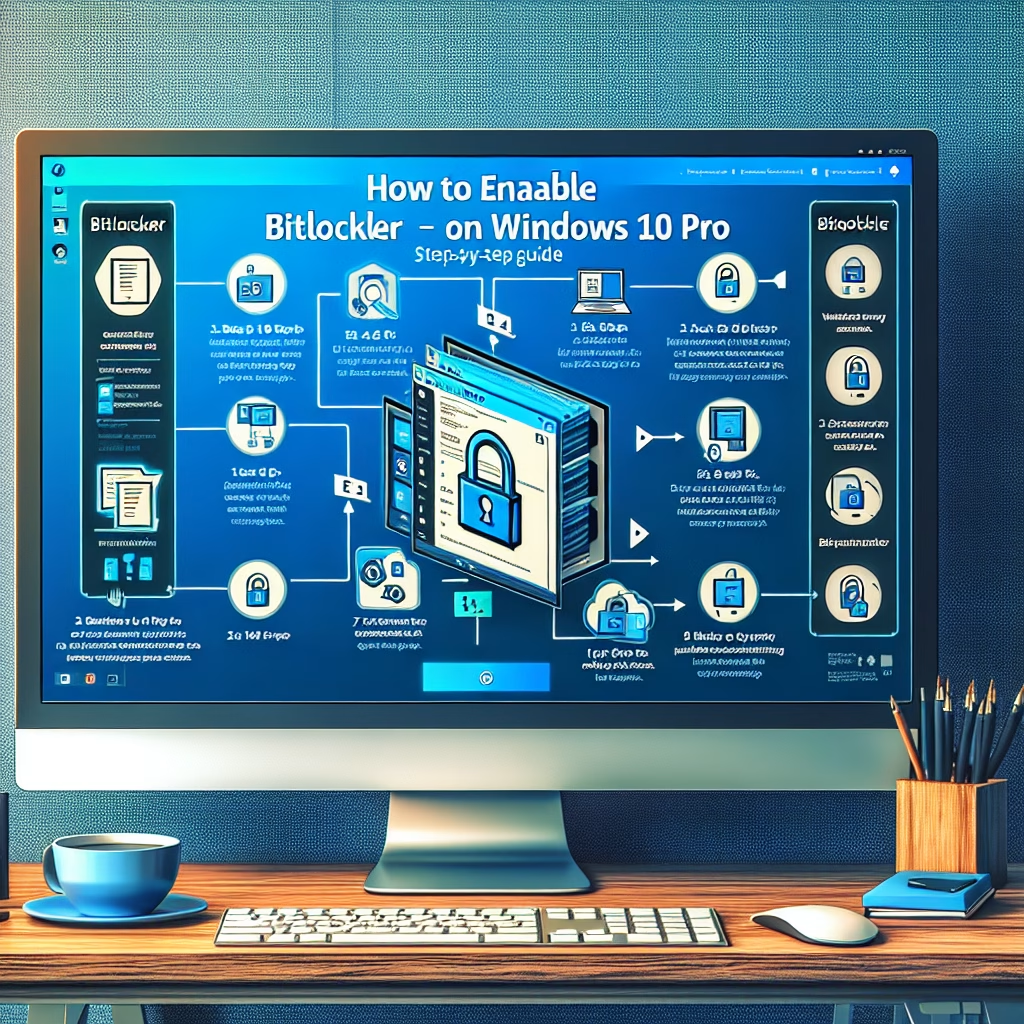How To Enable BitLocker On Windows 10 Pro
Summary:
BitLocker is a full-disk encryption feature available in Windows 10 Pro that protects data from unauthorized access by encrypting the system drive or fixed/removable drives. To enable BitLocker, users must meet specific hardware requirements, including a compatible TPM (Trusted Platform Module) chip, or use a startup key/password as an alternative. Common scenarios for enabling BitLocker include securing sensitive data against theft, complying with regulatory requirements, or protecting portable devices from offline attacks. The encryption process may take time depending on drive size and performance.
What This Means for You:
- Immediate Impact: Enabling BitLocker will encrypt your drive, enhancing security but may cause a slight performance degradation during the encryption process.
- Data Accessibility & Security: Once enabled, unauthorized users cannot access encrypted data without the recovery key or password, making it critical to store recovery credentials securely.
- System Functionality & Recovery: If the TPM is reset or hardware changes occur, BitLocker may enter recovery mode, requiring a recovery key to regain access to the system.
- Future Outlook & Prevention Warning: Regularly back up recovery keys and monitor BitLocker status to prevent data loss due to unexpected lockouts.
Explained: How To Enable BitLocker On Windows 10 Pro
Solution 1: Enabling BitLocker via Control Panel
To enable BitLocker on Windows 10 Pro, open the Control Panel, navigate to System and Security > BitLocker Drive Encryption, and select the drive to encrypt. Click “Turn on BitLocker”. Choose between using a password, a smart card, or letting Windows unlock the drive automatically with a TPM. Save the recovery key to a file or print it, then select the encryption mode (new or compatible). Finally, start the encryption process, which may require a system restart.
Note: For systems without TPM, enable bde -protectors -add via Command Prompt to configure a startup password or USB key.
Solution 2: Using Group Policy for Advanced Settings
For enterprise users, configuring BitLocker via Group Policy ensures standardized security settings. Open gpedit.msc, navigate to Computer Configuration > Administrative Templates > Windows Components > BitLocker Drive Encryption. Adjust policies such as requiring additional authentication at startup, restricting removable drive encryption, or enforcing AES-256 encryption. Apply changes and restart the system for the settings to take effect.
Warning: Misconfiguring policies may prevent BitLocker from functioning correctly, so test settings in a controlled environment first.
Solution 3: Using PowerShell for Automated Deployment
Administrators can enable BitLocker using PowerShell for automated or scripted deployments. Open PowerShell as Administrator and run: Enable-BitLocker -MountPoint "C:" -EncryptionMethod Aes256 -UsedSpaceOnly. To add a password protector, use: Add-BitLockerKeyProtector -MountPoint "C:" -PasswordProtector -Password (ConvertTo-SecureString "YourPassword" -AsPlainText -Force). Verify encryption progress with Get-BitLockerVolume.
Tip: For high-security environments, combine TPM with a PIN for multi-factor authentication.
Solution 4: Handling Common BitLocker Errors
If BitLocker fails to enable, check the TPM status via tpm.msc and ensure it is initialized. If the system lacks TPM, ensure the policy “Allow BitLocker without a compatible TPM” is enabled in Group Policy. For “Device Not Ready” errors, verify that the drive is formatted as NTFS and has sufficient free space. In case of performance issues, pause encryption with Suspend-BitLocker and resume during low-usage periods.
People Also Ask About:
- Can BitLocker be enabled without a TPM? Yes, by using a USB startup key or a password via Group Policy.
- How long does BitLocker take to encrypt a drive? It depends on drive size and speed but can take several hours for large drives.
- What happens if I lose my BitLocker recovery key? Without the key, data recovery is nearly impossible unless the drive is backed up.
- Does BitLocker affect performance? Minimal impact with modern hardware, but encryption/decryption overhead may be noticeable on older systems.
- Is BitLocker secure against all threats? While highly secure, attackers with physical access and advanced tools may attempt cold boot attacks.
Other Resources:
Suggested Protections:
- Store BitLocker recovery keys in multiple secure locations (e.g., Microsoft account, printed copy, or secure password manager).
- Enable TPM + PIN authentication for higher security on devices with sensitive data.
- Regularly check BitLocker status using
manage-bde -statusto ensure encryption remains active. - Use hardware-backed encryption (e.g., SSDs with Opal 2.0) to improve performance and security.
- Monitor BIOS/UEFI settings to prevent unauthorized TPM clearing or boot order changes.
Expert Opinion:
As a security best practice, BitLocker should be a mandatory deployment for Windows 10 Pro systems handling sensitive data. Combining TPM-based encryption with secure recovery key management mitigates risks from device theft or unauthorized access. Enterprises should enforce BitLocker policies via Group Policy to maintain compliance with modern data protection standards like GDPR or HIPAA.
Related Key Terms:
- TPM (Trusted Platform Module)
- Full-disk encryption
- BitLocker recovery key
- AES-256 encryption
- BitLocker Group Policy
- PowerShell BitLocker cmdlets
- Windows 10 Pro security
*Featured image sourced by DallE-3





